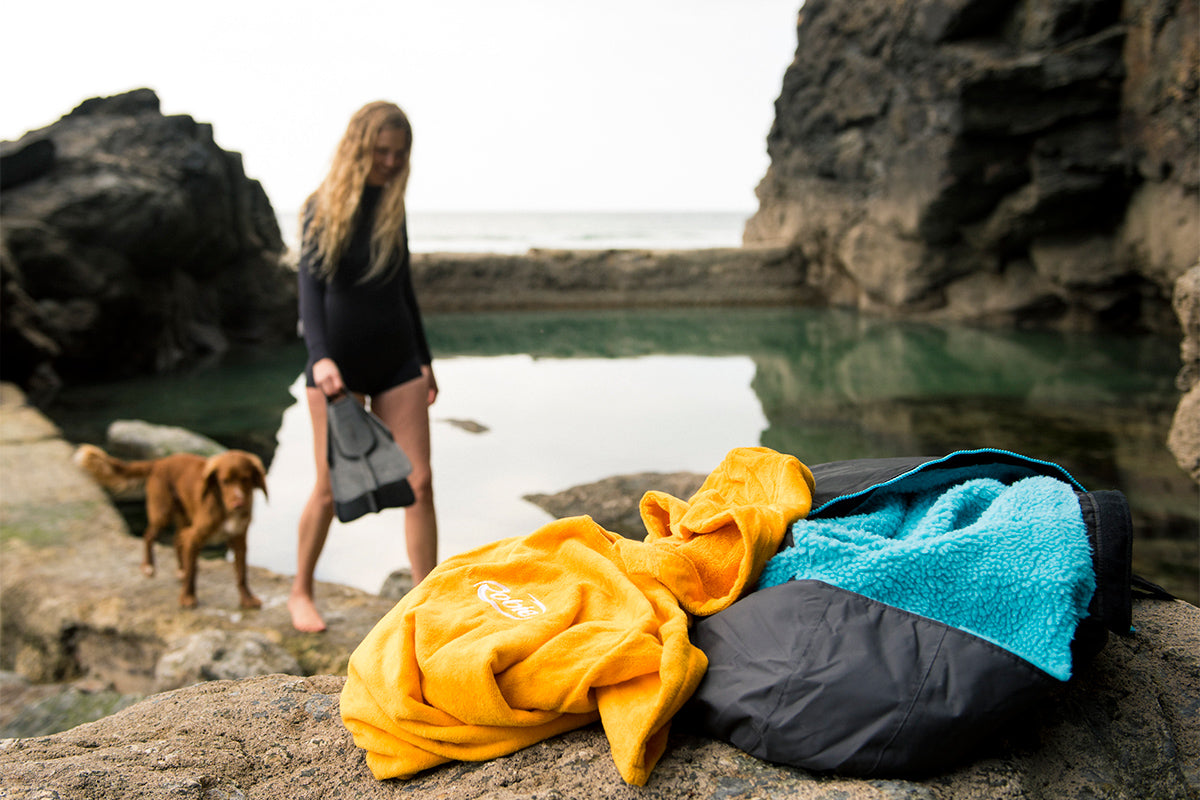
Where Can I Swim in a Sea Pool?
When you’re desperate for a dip, but stormy weather won’t allow it, where do you turn? There are a number of natural, semi-natural and manmade sea pools around the country that offer sanctuary from the swells and a safe place to dip throughout the winter. Plus, it’s easier to lower yourself into the chilly water without waves crashing around you! We’ve taken a look at the UK’s best sea pools, where you’ll find shelter from the storms and often a crew of likeminded winter dippers…
Pembrokeshire’s Blue Lagoon, Wales
Originally a slate mining quarry, the St Brides Slate Company pit closed in 1910, but local fishermen in Abereiddy saw an opportunity to create an artifical harbour, and blasted a channel between the quarry and sea. Nowadays the 25-metre-deep pool is a popular spot with swimmers young and old. The water within the lagoon ranges from bright green and turquoise to deep blues and silver. There are big jumps and little rocky ‘beaches’, plus lots of walking spots leading to and from the pool. The lagoon is also a venue for the Red Bull Cliff Diving World Series, and attracts hordes of onlookers to the spectacle.
The car park is a 5 minute walk from the lagoon and costs £4 per day. The access is wheelchair and scooter friendly.
Chapel Rock Tidal Pool, Perranporth, Cornwall
Busy Perranporth in Cornwall is a favourite amongst holiday makers. The 3-mile long beach is lifeguarded during the school holidays, and when the sea conditions are rough or unpredictable, the lifeguards will put up the red flag, meaning people shouldn't enter the water for swimming. If it’s low tide, the Chapel Rock Tidal Pool provides a haven for children, adults and dogs alike to swim in, safe from the waves and rips. You’ll find it hidden behind Chapel Rock (the big stack of rock topped with a St Piran’s flag) at the south end of the beach.
Perranporth is easily accessible, due to it’s big car park, ramped concrete entrance to the beach and facilities.

With depths of up to 1.5m, and stretching over 160m wide, Walpole Bay Tidal Pool is considered the largest natural sea pool in the UK. Since it’s opening in 1937 it has earned Grade II listed status, and is much visited and loved by swimmers. It is constantly partially submerged by the sea, but has fresh water springs that rise from within the walls, making it an interesting and unique mixture of fresh and saltwater.
The pool can get rough at high tide, so always check the tides and weather conditions before visiting and entering.
Refreshed twice daily by the tide, Bude Sea Pool is a semi-natural swimming pool on Summerleaze beach, used for swimming and other water based activities. It was originally built in the 1930s and is totally free to use. The charity Friends of Bude Seal Pool maintain the pool through money donated by the public, fundraising and by applying for grants. It’s around 88m in length and 43m wide, making it ideal for swimming lengths, splashing around or your daily dip.
It’s close to Bude town, parking and the beach, and provides a safe place for people to swim when the waves are crashing and the wind is howling.

Clevedon Marine Lake, North Somerset
Open 24/7, almost every day of the year, Clevedon Marine Lake is a saltwater tidal infinity pool that functions on donations only. You are allowed to swim, paddle, SUP, canoe and even go crabbing at the marine lake, and it is refreshed daily by the high tide. It is home to a strong community of year-round cold water swimmers.
You are not advised to swim in the pool when the sea is washing into the pool during high tide, known as ‘overtopping’. The Clevedon Marine Lake website has dates and times of when this will occur monthly.
Please note it’s important to be aware of the tides when swimming in sea pools. Most sea pools will not have lifeguard services, and many are inaccessible at high tide. Always check the tide times, and if you’re unsure, ask a local or, if possible, an RNLI lifeguard for advice. It is also integral to remember that swimming in the sea in winter is cold! If you’re not a seasoned dipper, don’t just dive straight in in your swimmers! Wearing a wetsuit, or boots and gloves, can help ward off shock or the possibility or hypothermia. Remember to lower yourself in slowly, listen to your body and never stay in longer than feels safe. Swim with a buddy or in groups, always tell someone where you’re going and when you plan on being home, and take lots of cosy, loose layers, your Dry-Series robe and a hat for before and afterwards.













